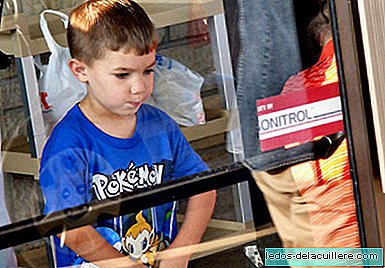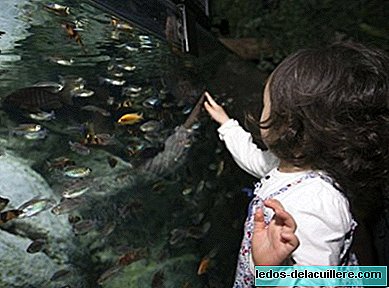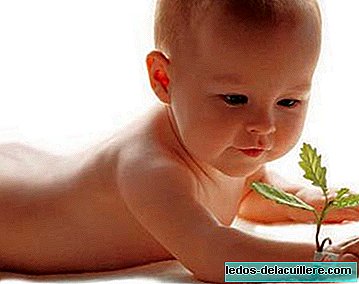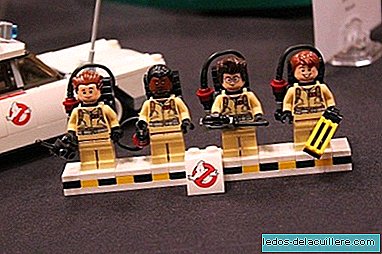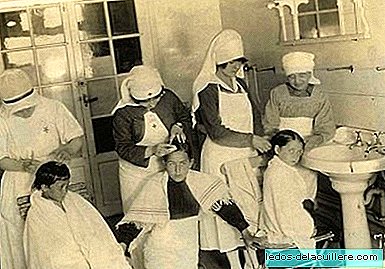
With the heat, and in the schools, rare is the year that we do not hear cases of pediculosis or lice in children, when they do not touch you closely. About lice there are many myths and truths, legends and certainties about his performance, elimination, contagion ...
Here we present some information about pediculosis according to experts, questions with answers about everything you need to know about lice.
- Is it possible to prevent the spread of lice? The American Academy of Pediatrics has just published in the journal "Pediatrics" an extensive report on the subject, noting that it is probably impossible to prevent all infections.
- Should the child with lice not go to school? According to the same AAP, no child should be restricted from attending classes because they have lice, since it is under contagion in the classroom. If it is detected at school that a boy has lice, it is not necessary to remove him from the classroom, but to notify the family to have him treated before he returns the next day.
- Should we shave my head? Another myth rooted in the fight against lice is that short hair prevents contagion. But lice infestation is not significantly influenced by the length of the hair or the frequency of brushing or washing.
How is the spread of lice?
- Dr. Patricia Troielli, from the Argentine Society of Dermatology, points out that the louse does not jump and the contagion is given through head-to-head contact, like the one children have in some games or when they share the same armchair or a bed. The louse does not fly either.
- Just as the louse does not jump or fly, neither does anything. While the louse can survive prolonged periods in chlorinated water, it is unlikely that there will be a significant risk of transmission in the pools, says the academy's report. One study revealed that submerged lice became immobile and remained in place on the heads of four people infested with lice for 30 minutes of swimming.
Lice and manual removal
- Pediculicides are highly lethal to lice, but in the case of nits the effect is less.
- That is why a well-done treatment is one that is done in two cycles, in which the second cycle aims to kill the nits that have remained from the first treatment.
- Therefore, it is advisable to locate and remove nits manually after the pediculicide is activated. The AAP report recalls that the removal of nits (with a fine comb or without it) is easier if the hair is wet.
- How to start the ideal lice treatment? It is recommended to start treatment with a permethrin (a synthetic chemical that is used worldwide as an insecticide and acaricide, as well as insect repellent) at 1% or with pyrethrins, if there is no suspicion of resistance from the lice to the pediculicide.
Do lice products affect the child's skin?
- Pyrethrins can cause irritation, especially in those with plant allergies, so it is generally recommended to start with permethrin.
- Avoid massaging the hair too much, because it can irritate the skin.
- The academy recommends that after applying the pediculicide, the hair be rinsed by placing the child's head on the sink or on a sink, and not in the shower or in the bathtub, to minimize contact of the product with the skin of the body.
- In addition, the rinse water should be warm, not hot, since high temperatures enhance skin absorption.
Effectiveness of lice
- Although there are some cases of resistance, many times the reason that the lice are not eliminated after applying the pediculicide is that the treatment is badly done: the second treatment cycle is not done as indicated in each product (which usually varies 7 to 10 days after the first application) or the nits near the scalp are not removed, which are viable.
- Viable nits, from which after 8 to 9 days of incubation the lice will emerge, they are those that are approximately 4 millimeters from the scalp, since they need body heat to survive. They are also usually the color of the hair, to the point that in white studies have been found white nits to match the gray hair of their guests.
- To have nits is to have lice? Finding nits that are beyond one centimeter of the scalp is not a symptom of infestation. The child may have had lice. What allows the diagnosis is the presence of the louse, and what should motivate the suspicion is that the person scratches his head.
- Before the detection of lice in a family member, it is worth checking the head of the rest, and the children's friends. Even so, the academy warns, "You should never start a treatment if there is no clear diagnosis of pediculosis", since the result of the indiscriminate use of pediculicides is none other than the appearance of resistant lice.
- In any case, it is wise to treat family members who share the bed with the infested person, even if no live lice are found.
- Since the louse does not survive more than 24 to 48 outside the head, only the elements that have been in contact with the person's head 24 to 48 before treatment should be cleaned. That includes brushes, combs, pillowcases, hats or other clothes that have been in contact with the hair.
In addition to all these clarifications, we remind you of this practical guide against lice that will help prevent and act against these uncomfortable visitors. A few bugs, lice, about which there are myths and truths We hope we have unraveled.


